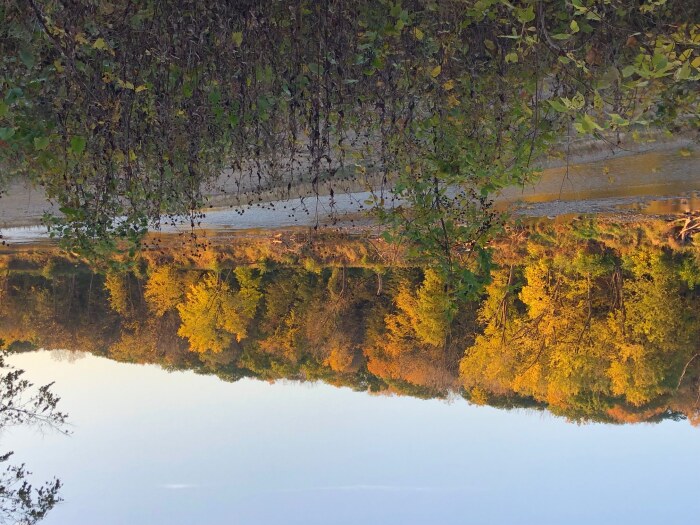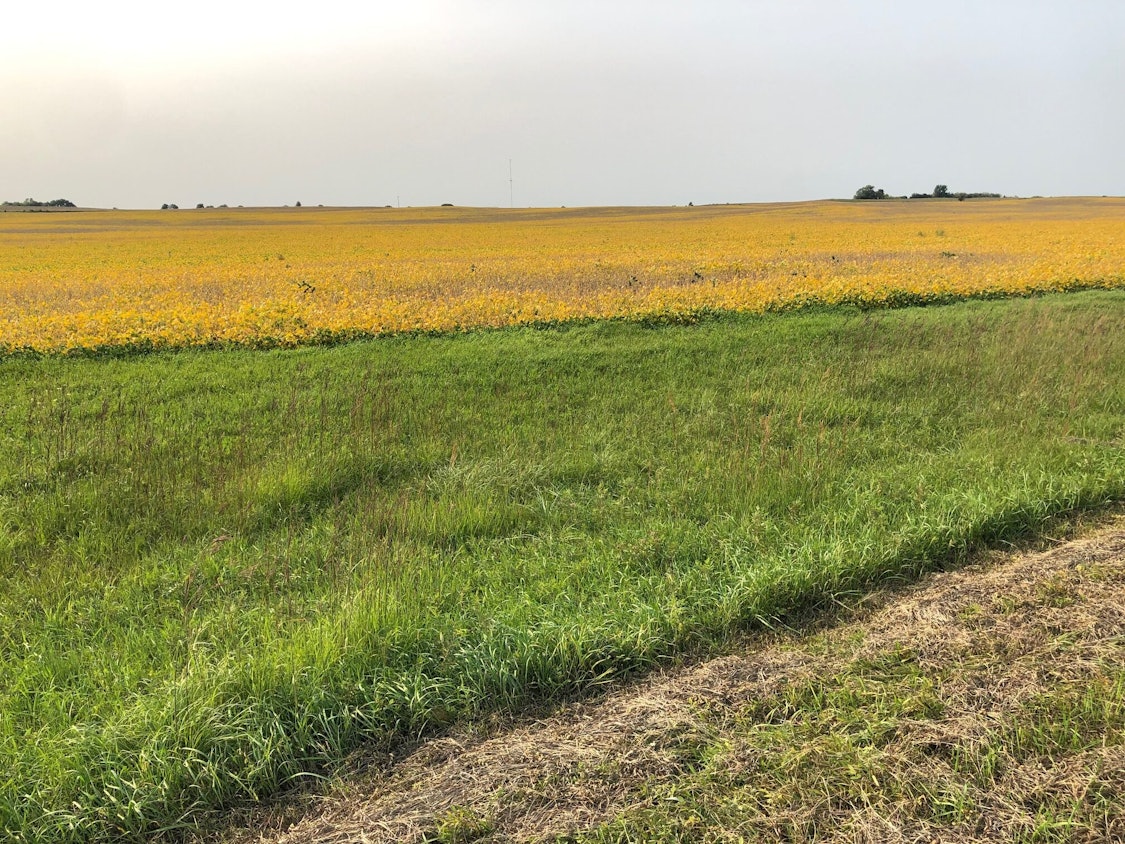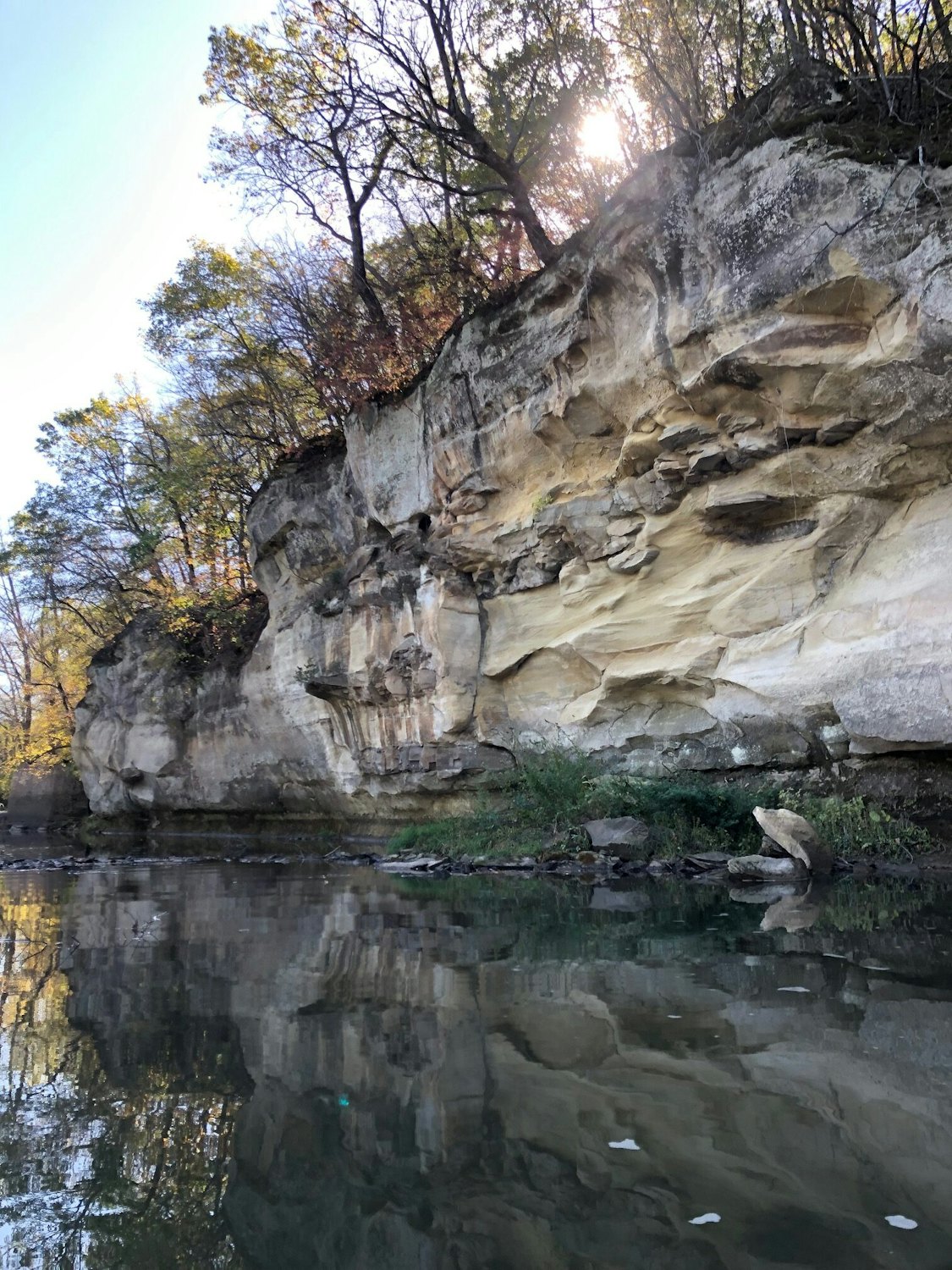John Norwood is a Polk County Soil and Water Commissioner.
The Cedar Rapids Gazette held an hour-long water quality panel last week as part of their ongoing Iowa Ideas series. Gazette columnist Todd Dorman moderated the panel, which included University of Iowa Research Engineer Chris Jones, Iowa Environmental Council staff attorney Michael Schmidt, and myself, a Polk County Soil and Water Commissioner elected in 2018.
We spoke about Iowa’s water quality challenges within the context of operating one of the world’s most productive agricultural systems, including 23 million acres of corn and soybean row crops. Dorman summarized highlights from the discussion, and the full replay is available on YouTube:
Thoughtful debate and idea exchange is one way we can arrive at better solutions. I am interested in your comments and suggestions.
I would like to offer some clarifying comments, since I believe some misinformation was presented in the discussion, or missing information which would be helpful to incorporate into the collective wisdom.
1. AG LAND OWNERSHIP IN IOWA
Land ownership and rental acres are not male dominated. In fact, according to the 2017 Iowa Farmland Ownership and Tenure survey, women owned 47 percent of all acres and 55 percent of all leased acres in Iowa. Nearly 60 percent of farmland owners don’t farm. The land is leased to produce income, often for owners, most of whom are of retirement age (65+) and may be on a fixed income (13 percent of female farmland owners are at least 80 years old).
Please keep in mind, as one Taylor County farm operator and ag landowner who watched the video wrote to me, “balance sheet wealth can disappear with one crazy event on the other side of the world or with the stroke of a lender’s pen. If farming is such a lucrative business why is the farmer suicide rate one of the highest of all occupations?” It’s a tricky industry that can take away a lifetime of work with one mistake or a fate of nature.
Soybean field, north central Iowa
2. SOIL HEALTH
Fixing our depleted soils is a critical issue with farm productivity, water quality, and flood control implications. Even in Iowa, one of the richest soil regions on earth, our soils are not “fine.” We’ve lost one-third of our topsoil, by some estimates. The soils have been degraded from decades of tillage and certain agronomic input practices. The resident organic matter has been depleted such that the soils ability to support biologic and hydrologic activity has been compromised.
This results in non-porous, hard compacted soils that have reduced ability to absorb and retain water. Instead, stormwater runs across fields, picks up sediment and nutrients which is filling up drainage ditches, to our major army corps reservoirs (Saylorville, RedRock, Coralville).
Wayne Fredericks, Mitchell County farmer, relentless researcher and innovator, and past President of the Iowa Soybean Association, suggests the science is building and that for each 1 percent increase in soil organic matter we can achieve in our soils, on average, we may see another 27,000 gallons of field water storage per acre. Organic matter is the component of soil that enables improved water infiltration, absorption, and related benefits.
Magnify those results by a portion of the 23 million acres we farm to corn and beans, and we have the potential to flatten storm flood curves and slow the movement of sediments and nutrients down river. For example, assuming an additional field capacity of 27,000 gallons per acre (about one acre-inch) across 10 million acres of row crop acreage, we’d supply the equivalent flood storage capacity of 1.3 Saylorville Lakes!
The City of Des Moines, working with Iowa State University, has modeling which shows the potential for reducing major flood events.
3. CARBON MARKETS
There appears to be some confusion over whether carbon markets are using public dollars. The carbon markets that exist today are private dollars flowing largely from large Fortune 500 corporate entities which are trying to get to carbon neutral footprints. In some cases they will pay private third parties to remove carbon from the atmosphere so that they can use those credits to offset their own carbon emissions or production.
The carbon markets are a form of monetary exchange for doing work. But while the price per unit of carbon removed is what is paid, the total value received for the payment made is a function of what is ultimately delivered.
Where does that ton of carbon go? I’d rather see the carbon markets used to support useful work like driving more carbon into the soil, or paying landowners to store carbon in new or permanently protected riparian forest areas, than injected into bedrock to extract more oil and gas.
4. RACCOON RIVER
Chris Jones asserted that the Des Moines Water Works is abandoning the Raccoon River supply. I believe that comment was in error. If this current drought shows anything, it is that we need to protect all sources of supply including our two principal surface water supplies, the Des Moines and Raccoon Rivers.
The Jordan Aquifer, used by some communities like my home city of West Des Moines (in combination with the purchase of 50 percent of our municipal water from Des Moines Water Works), is a finite resource. While metro communities are looking to drill more shallow river wells to help with treatment, this isn’t a substitute for protection of our surface waters for all public uses: drinking, fishing, swimming, recreation, and so on.
We need to increase our efforts for source water protection using systematic approaches and tools. In addition, given our location at the bottom of one of the world’s most intensively farmed regions, we should have advanced reverse osmosis treatment plants as the general rule for our metro, not the exception.
Raccoon River near Redfield (Dallas County)
5. DRAINAGE DISTRICTS
We have more than 3,000 drainage districts across the state, most of which are governed by county boards of supervisors. These districts comprise some 6 of 14 million acres of tiled ground — our “ag plumbing.”
University researchers have already determined tiling is a major conduit of nitrates and possibly other contaminants to our river systems. What I’d like to see if the modernization and weatherization of these districts to go beyond their original private drainage function to include additional public functions such as water filtration via wetland additions, aquifer recharge, flood storage, and even irrigation in some places.
While the water moving in the tile is a privately funded function, when it enters the state’s waterways it becomes a public resource. We need to design conservation into the functioning of these districts, including some good portion of 1,600 Conservation Reserve Enhancement Program style “breakpoint” wetlands that have been identified. These wetlands provide a host of biological functions in addition to filtering tile water and service hundreds of acres at a time.
That’s where some of the federal government’s $1.5 trillion in infrastructure money could be used to help acquire key parcels to repurpose and broaden the function of these infrastructure systems. The Iowa Drainage District Association tells me more than $100 billion has been invested in these systems.
FINAL THOUGHTS
The Iowa agricultural system is so big and heterogenous, the only practical way to drive meaningful, cost effective and timely change is to think (vision), organize (stakeholders), design, and deliver in systems that make sense for each local region. Some approaches are universal; others need to be customized.
Regardless, the movement of water across agricultural lands requires system thinking and design principles just like other infrastructure systems: power, natural gas, roads, municipal wastewater and so forth. That in turn requires landowners working together to reimagine how we can manage land and water using teams and collective efforts whether we’re talking drainage or cover crops or creating markets for third and forth crops.
I believe the Iowa spirit is strong and ingenious. With a new vision for agriculture guided by 1) resiliency and 2) sustainability, using 3) clear thinking, 4) sensible 5) prioritized and 6) actively managed strategies, backed by 7) aligned sources of a) private, b) state and c) federal funding, we can and will make tremendous strides in improving outcomes: water, biology, ag productivity, community betterment, statewide quality of life, flowing down our two major river systems to the Gulf of Mexico.
Onward!
Sunday, October 24
John Norwood
Photo of John Norwood by Dylan Huey, published with permission
Top photo of the Raccoon River in West Des Moines provided by the author and published with permission





3 Comments
I agree with most of these technical recommendations...
…in terms of soil health, carbon storage, protecting rivers, etc. This post has some excellent ideas. As a rural Iowan and long-time water-policy watcher, I would add/modify the following things.
1) Iowa needs sticks as well as carrots, meaning laws, regulations, requirements, etc. The voluntary approach is failing, and Iowans are being misled, to put it politely, about water quality “progress.” As a start, the conservation requirements for gaining access to Farm Bill benefits need to be much stronger than the inadequate requirements currently in place.
Also, I have been following Iowa drainage issues for four decades, including recent drainage meetings. In my area, landowners are in charge of drainage districts, and in their discussions, the overwhelming concerns are economic costs and benefits, not water quality. I’m wondering how much public money it would take to actually shift their priorities, absent any laws or regulations.
2) When it comes to permanent carbon storage, prairie remnants and good prairie plantings are as effective as “riparian forest areas” and should also be protected. Iowa needs many more acres of good prairie. Prairie-dependent wildlife is in serious trouble, which is ironic, because prairies and wetlands used to cover eighty-five percent of Iowa.
3) As farm conservation changes, all new tools, incentives, and systems that are developed need to be specifically evaluated for ecological impacts. As one example of why that is needed, a Conservation Reserve Program option actually paid farmers and landowners to destroy original riparian prairie remnants by planting trees and shrubs on them. There were heartbreaking prairie losses, and it was a gross misuse of tax dollars. Ecological illiteracy, however well-intended, should not be part of future farm policy.
PrairieFan Tue 26 Oct 10:41 PM
Carrots, Sticks & Strings
Appreciate the comments, perspective and wisdom Prairie Fan:
1) I feel in the world we live in today, we’ll be most effective if we can figure out how to tie strings (conditions) to the carrots (funding) we offer. There is an important role for sticks, but we’ll get better traction with carrots and strings. Seventy percent of farm profitability is presently tied to public funding. Let’s establish conditions, standards for getting the public funding based on achieving the outcomes we want to see, and taking a systems view to how we need to re-shape our landscapes to achieve multiple objectives (US Army Corps and US Forest Service, for example, have multiple use missions). This is also the direction it would be prudent to follow on the emerging carbon related private dollars that will likely at some point dwarf or at least rival the public funding, I suspect.
2) I’m a prairie fan (lands sake participant in Madison County) and we need to learn more about and figure out how to finance and sustain more prairie for the biology and hydrology it helps support. Yes, we are living in the most altered state in the Country. I’m encouraged the prairie strip studies that ISU’s Lisa Schulte Moore is driving forward. Are the strips fixed in location on the land or do they rotate over time depending on the situation? What are the benefits? Let’s incorporate prairie and these other important land types on the ground and at scale to drive important sustainability criteria. 10% of our 23 million acres of corn and bean ground should be other crops and non-crop land uses (perennials, prairie, forests), including an acre or two per hundred, supporting higher value products we can grow indoors or start indoors. These facilities will help with year round job growth in our rural communities. California, which produces 90% of our fruits and vegetables, is increasing under threat of generational drought and likely shifts on water use policy. Maybe we ought to add a new role for Iowa as an additional source of supply for some of these healthy plant based foods that can fit into our climate or indoor regimes. If they can grow hot house tomatoes in Canada and Europe which I buy at Trader Joes, why not in Iowa?
3) I agree. Carbon dollars also need to be evaluated for ecological impact and system integrity. The ideas of additionally and permanence need to be supplemented with some concept of “provenance”. That is what the land was originally should help inform what is the present “highest and best” use of the land today and in the future. As you suggest, let’s make sure that public dollars and carbon/water market dollars are used to drive systematic level resiliency and all that entails, farm productivity to ecological integrity to protection of our land, soil, water, air, communities.
Thank you.
John Norwood Wed 27 Oct 10:37 AM
I appreciate your further thoughts.
My strongest belief is that NOT encouraging or funding the destruction of Iowa’s remaining original natural areas, especially prairie remnants, should be a bottom-line test for future farm policies.
I am nervous that water and carbon policies will fail that test because soil conservation policies already failed that test Apart from the destructive tree planting, I talked with two farmers who bulldozed their steep woodlands and planted the land to soybeans for a few years so they would be eligible to enroll in the CRP.
That happened all across Iowa in past years, especially southern Iowa. Some of the natural areas that were obliterated to achieve CRP eligibility were original prairie remnants, which were then planted with very inferior versions of what was destroyed.
Because of your work, you have the ears of some very important people. Whatever you can do to help make sure that Iowa’s surviving natural areas will not be destroyed in the name of farm conservation in future will be greatly appreciated. Thank you.
PrairieFan Wed 27 Oct 4:07 PM